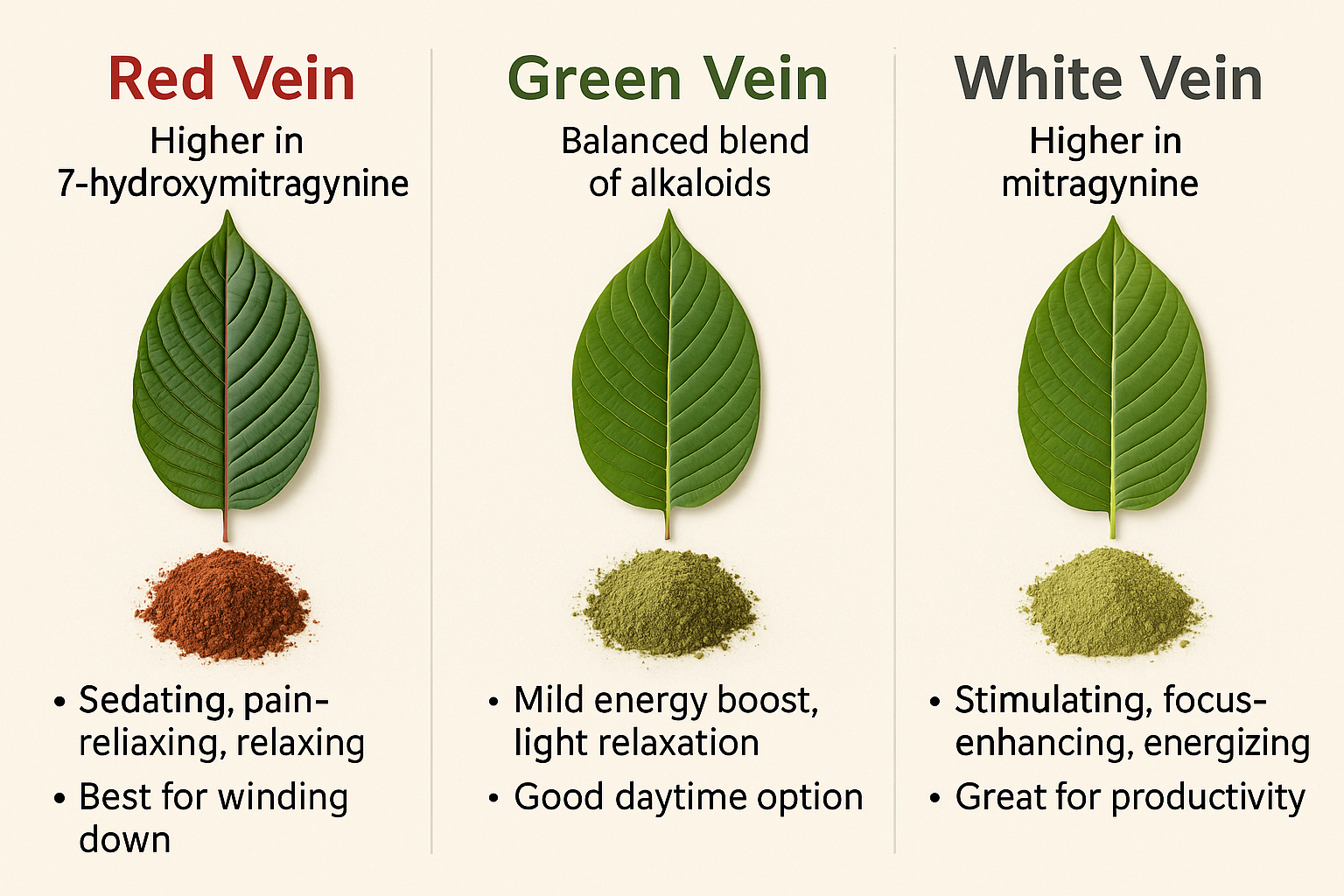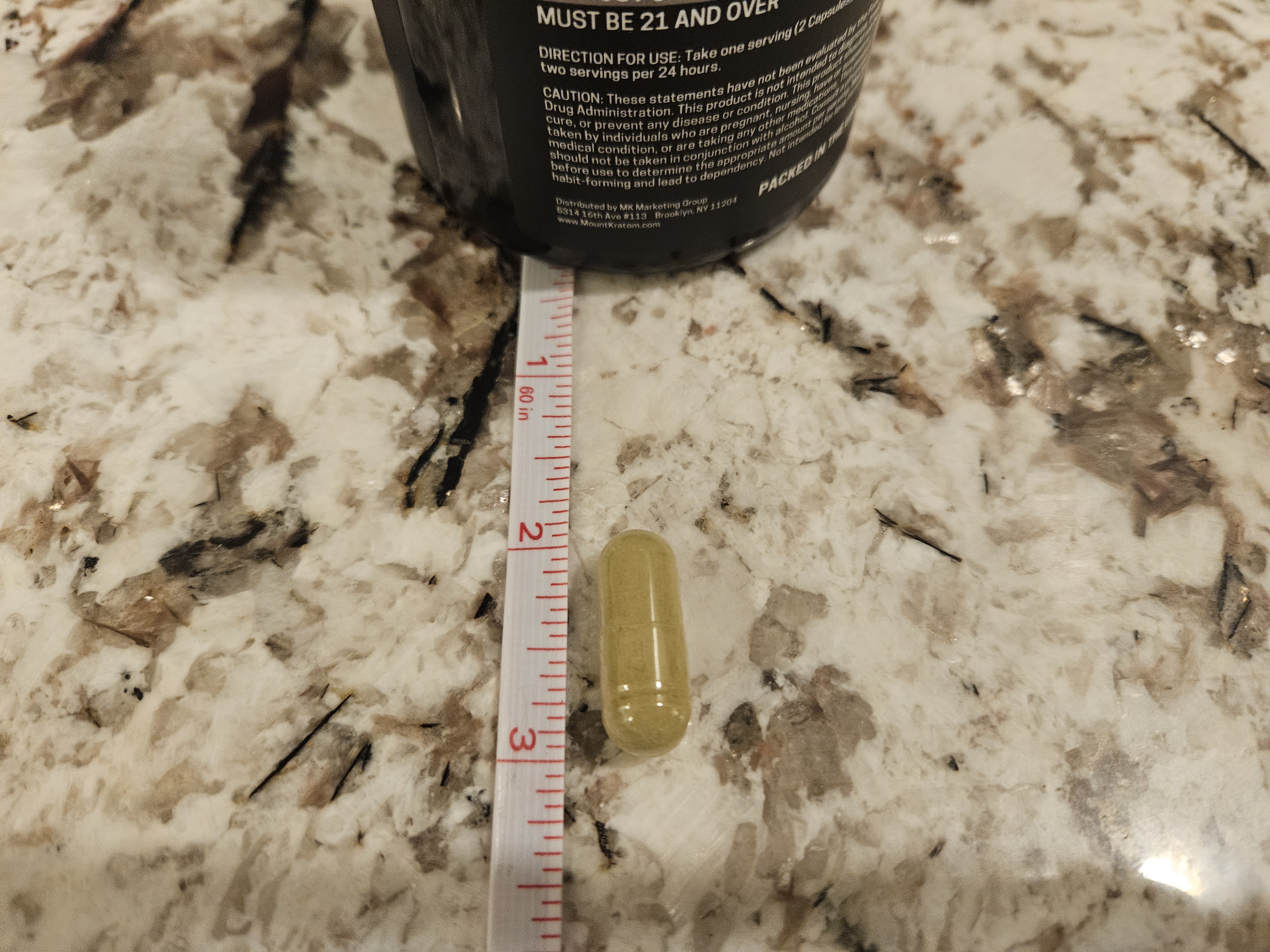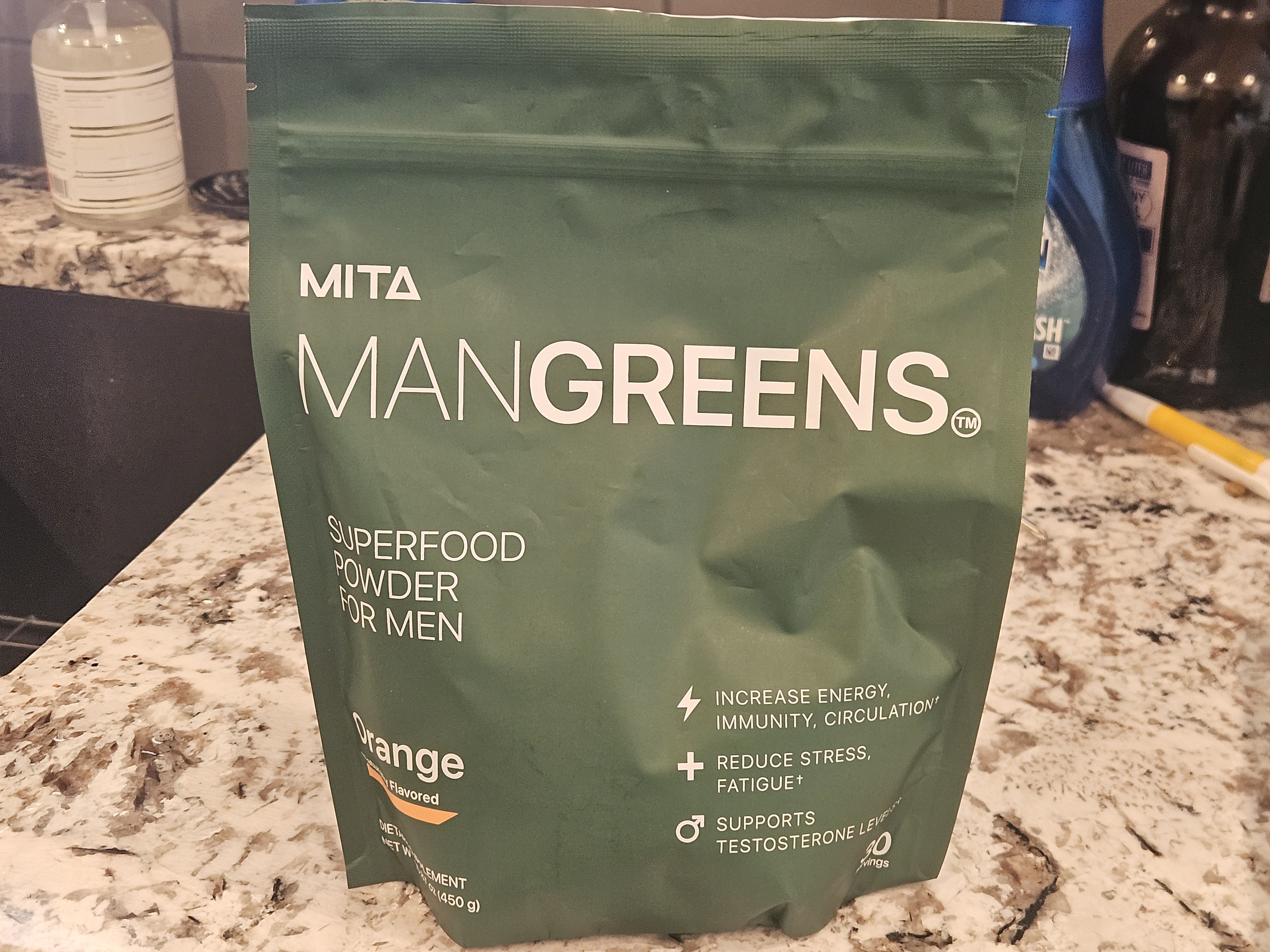I tried White Maeng Da Kratom for focus and energy.
I’m always looking for an edge in both my creative and competitive pursuits. And more importantly, I’m looking for something that gives me that edge while still being compliant with the World Anti-Doping Agency. Boxing is heavily regulated, so I can’t just take whatever’s trending on Reddit. A lot of legal compounds are still banned in competition, so I have to be twice as cautious.
But it’s not just the ring where I need to be sharp. As I write this, it’s 5:30 a.m. I get up early—not to flex some “rise and grind” mindset—but because this is when my toddler is still asleep. My window for deep focus is limited. I run on five to six hours of sleep most nights, so anything that gives me a clean boost in focus and energy, without the crash or the jitters, is worth trying.
That’s what brought me to White Maeng Da Kratom.
Now, if you’ve never heard of kratom, you’re not alone. And if you have, chances are you’re picturing shady gas station pills or some sketchy herbal supplement being pushed by people who call themselves biohackers. But White Maeng Da Kratom is different—and once I started digging into the science, I realized it had real potential.
This article breaks down:
- What kratom is and how it works
- Why the White Maeng Da strain stood out
- The science behind its effects on focus and energy
- My personal experience using it
- How to use it safely and legally
Disclaimer about kratom
Before we go any further, let me make this absolutely clear: I’m not a doctor, and this isn’t medical advice. This is just my personal experience and understanding after doing the research and testing it out myself. Don’t take any supplement just because some guy who gets punched in the head for a living says it’s a good idea.
Always do your own research, check in with your doctor if needed, and be smart about what you put in your body.
What Is Kratom?

Kratom (pronounced KRAY-tum or KRAH-tom, depending on who you ask) is made from the leaves of a tropical tree native to Southeast Asia called Mitragyna speciosa. For centuries, farmers in Thailand, Indonesia, and Malaysia have chewed the leaves or brewed them into tea to stay energized, relieve pain, and maintain mental clarity during long days of labor.
In that way, kratom shares a backstory with the coca plant—the one cocaine is derived from. For generations, indigenous people chewed coca leaves to fight fatigue and altitude sickness. But kratom is in the coffee family, not the coca one.
Here’s where it gets interesting: unlike coffee, which works mostly on adenosine receptors, kratom interacts with both opioid and adrenergic receptors in the brain. That’s why it can give you energy, focus, and pain relief—all depending on the strain, dose, and your body chemistry.
How does Kratom affect your body?
Every kratom strain contains dozens of natural compounds, but two alkaloids are responsible for most of the effects (Source):
- Mitragynine: The most abundant alkaloid. It gives kratom its energizing, focus-enhancing qualities. It primarily acts on the adrenergic receptors (the same system activated by adrenaline) and weakly on opioid receptors.
- 7-Hydroxymitragynine: Far more potent, but found in much smaller amounts. This compound binds strongly to opioid receptors and is responsible for kratom’s sedating and pain-relieving effects.
The ratio between these two is what determines how a strain feels: stimulating, calming, or somewhere in between.
Adrenergic receptors are like your body’s built-in gas and brake pedals. They respond to adrenaline and noradrenaline, activating when you need to fight, focus, or flee. There are two main types: alpha and beta.
Mitragynine is an alpha-2 adrenergic receptor agonist. That means it binds to and activates these receptors. Here’s what happens when it does:
- Initial spike followed by lowered blood pressure
- Enhanced prefrontal cortex activity—improving working memory, planning, and attention (Source)
- Suppression of norepinephrine through negative feedback (so you don’t get overwhelmed by stress hormones) (Source)
The result? Calm, focused alertness.
Too much norepinephrine makes you jittery and scattered. Too little, and you’re lethargic. Kratom helps regulate this balance, likely promoting low-to-mid beta brainwave states—the same brainwave patterns seen in calm, focused thinking and flow state performance. (Source)
Meanwhile, opioid receptors are part of your body’s pain regulation and reward systems. When activated, they can reduce the sensation of pain, promote feelings of relaxation, and even trigger mild euphoria.
Unlike traditional opioids, mitragynine and 7-hydroxymitragynine interact with these receptors in a more complex way—producing pain relief without the severe respiratory depression linked to drugs like morphine or heroin. However, they still carry a risk for tolerance and dependence, especially with prolonged or heavy use.
This dual action—stimulating adrenergic receptors and mildly activating opioid receptors—is what makes kratom such a unique tool for both mental clarity and physical comfort.
The difference between red, green, and white strains of kratom
Not all kratom is created equal. You’ll often see it sold as red, green, or white strain—names that refer to the color of the veins in the leaves at harvest.
- Red Vein: Higher in 7-hydroxymitragynine. Sedating, pain-relieving, and relaxing. Best for winding down.
- Green Vein: Balanced blend. Offers a mild energy boost and light relaxation. Good daytime option.
- White Vein: Higher in mitragynine. Stimulating, focus-enhancing, and energizing. Great for productivity.
White Maeng Da is especially potent because White Maeng Da strains are selectively bred for higher mitragynine which will generate the focusing effect I’m looking to achieve. That’s why I chose it: I wasn’t looking to relax—I wanted to get things done.

Kratom’s effects on brain waves
Before we get into how kratom affects your ability to focus, it’s important to understand the brain’s electrical rhythm. Your mental state—whether you’re stressed, calm, deep in thought, sleeping, or daydreaming—is tied to specific brainwave patterns.
These are measured in hertz (Hz) and reflect the frequency of electrical activity in your brain. Kratom’s impact on focus and mental clarity is closely tied to how it influences these brainwave states.
Beta waves range from about 12 to 30 Hz, and they’re associated with active thinking, focus, problem-solving, and sustained attention. But there’s nuance:
- Low beta (12–15 Hz) is linked to a calm, focused alertness. This is that “in the zone” mental state—you’re awake, sharp, but not anxious.
- Mid beta (15–20 Hz) is what you’re in when you’re actively engaged—like when you’re writing, sparring, or breaking down strategy.
- High beta (20+ Hz) is where things get chaotic: stress, anxiety, overthinking. That’s when norepinephrine is too high, and your focus fractures.

So when kratom activates those alpha-2 adrenergic receptors, it’s likely pulling you down from high-beta chaos and into that sweet spot of low-to-mid beta—clear, steady, and productive. You’re not daydreaming (that’s theta, 4–8 Hz), and you’re not relaxed to the point of zoning out (that’s alpha, 8–12 Hz).
This explains why, on kratom, you can sit still, think deeply, and work cleanly—without the mental noise or fight-or-flight tension that normally gets in the way.
In summary, here’s what happens when these receptors get stimulated:
- You feel calmer, but not sedated.
- Your mind gets clearer, with fewer background distractions.
- Your heart rate slows, but your ability to concentrate and stay alert improves.
Kratom is not like caffeine, which ramps everything up and can leave you feeling wired and jittery. With kratom—especially white strains like White Maeng Da—you get this smooth, grounded kind of energy. You’re on, but not overstimulated.
Once I understood how this receptor system worked, the focus and clean energy I was feeling from kratom made a lot more sense. It wasn’t just some random herbal buzz—it was my body responding to a very real neurochemical effect.
Legality and safety of kratom
Kratom’s legality in the U.S. is complicated.
In 2016, the DEA tried to classify kratom as a Schedule I substance—alongside heroin and LSD—citing its interaction with opioid receptors and potential for abuse. But public backlash was massive. Scientists, Congress, and over 140,000 citizens pushed back. The DEA relented.
Still, kratom’s legal status is a patchwork:

-
- Banned: Alabama, Arkansas, Indiana, Rhode Island, Vermont, and Wisconsin
- Legal but regulated: Tennessee allows natural kratom but bans synthetic alkaloids. While writing this article, Colorado introduced the Daniel Bregger Act, which will regulate Kratom more closely.
- Age restrictions: Some states ban sales under 18 or 21; others ban possession by minors
The FDA continues to push for tighter regulation, so if you’re considering using kratom, know your local laws and stay informed. Kratom is powerful—but it’s not risk-free.
- Tolerance builds fast. Use it daily or at high doses, and you’ll find that what used to work starts doing less and less—until you’re just taking it to feel normal, not better. Part of this is due to kratom’s long half-life—particularly mitragynine, which is, on average, 24 hours. (Source)
That means if you’re taking it every day, you’re never really letting your body reset. The alkaloids pile up in your system, and your receptors stop responding as strongly. Before long, you’re doubling the dose just to get back to baseline. - Addictive potential. This isn’t fear mongering. Kratom interacts with opioid receptors, and if you lean on it too hard, you’ll start feeling withdrawal symptoms when you stop—fatigue, irritability, and in some cases, full-on physical discomfort. Again, the extended half-life plays a role here. (Source)
Because mitragynine clears the body slowly, your system gets used to having a steady stream of it. Take that away abruptly, and your body protests. The longer and more consistently you use it, the harder that adjustment becomes. - Easy to over do: At high doses, you might experience nausea, grogginess, or stomach discomfort. Dry mouth is common. Because kratom has that dual effect (stimulating at low doses, sedating at high ones), it’s not hard to miscalculate and end up groggy, nauseous, or wired in the worst way. Also, the effects on the alpha 2 adrengeric receptors can lead a stomach ache.
- Unregulated market: There are good vendors out there—but there are also shady ones selling garbage filled with contaminants, inconsistent alkaloid content, or even adulterants like synthetic opioids.
I don’t use kratom every day. I treat it the same way I’d treat a strong pre-workout or nootropic stack—it’s a tool, not a crutch. And when I do use it, I’m strict about dose, timing, and source.
If you’re going to experiment with it, here’s what I recommend:
- Start low. 1–2 grams is more than enough to feel it if you’re new.
- Don’t chase the high. You’re using this to get better—not to escape or numb.
- Take breaks. Even something as “mild” as kratom needs to be cycled to avoid building dependency.
- Buy from reputable vendors. Look for third-party testing, certificates of analysis, and reviews from real users—not bots or hype men.
My Experience with White Maeng Da
I don’t have any issues with pain, so this article hasn’t focused on those uses. This is not to say that this won’t happen in the future, as I am boxing professionally. However, my main concern was the use of the kratom to help me focus and get things done.
On the recommendation of a friend, I got my kratom from Mount Kratom. I checked out their website and they fit all the basic criteria I listed above. I ordered capsules and tinctures.
First, let’s get this and out of the way. The pills are pretty big. They aren’t so massive that most people will have trouble swallowing them, but if you do have trouble swallowing pills, these aren’t for you.

Fortunately, there are other ways to ingest kratom. With that said, I thought the tincture tasted pretty strong. The instructions were to leave it under my tongue, but that just wasn’t going to happen.
I’ll be the first to tell you that you shouldn’t pick supplements based on taste if it’s about performance, but there is also a point where if the taste is too intense or displeasing, you won’t take it. I just stuck with the capsules and, aside from not being able to swallow them without water, things were fine.
The first time I used it, I got a bit of a stomach ache, but this was quickly resolved by taking half of the recommended dose. The servings say 2 grams, which worked out to two capsules, but I just cut it in half. That got me all the benefits with none of the gastrointestinal distress. Stomach aches are often a side effect of any alpha 2 adrenergic agonist.
You may also experience dry or “cotton mouth,” as another side effect of alpha 2 adrenergic agonists is that they cause decreased secretion of saliva. I definitely experienced this at either dose, but it’s easy to remember with a drink of water.
For the cognitive enhancement that white strains of kratom claim, I can say it definitely works. That’s not even a question. Within 20-30 minutes, I was pretty locked in, but calm and not particularly worried about the looming deadlines of the multiple projects I’m working on. That last part was a big plus.
I write for a living, taking on various freelance work along with other projects related to making and content creation. I’m often in the situation where I’m busy working on one project and simultaneously distracted by thinking about the next. But not this time.
An added bonus is that while using White Maeng Da Kratom, it was difficult to be distracted by my other windows or my phone. I knew that an email or text came in, but I was just in the flow state of creating. Based on what we know about brain waves, I was probably in the flow state, as the lower brain wave states induced by kratom makes it easier to reach the brain waves required for flow state.
One of the biggest advantages kratom has over caffeine for energy is that it makes you focused, but not jittery or hyper energetic. Remember, it lowers blood pressure and brainwave activity. Because of that, kratom didn’t give me any troubles taking before doing work in the evening. I’d never have caffeine before a late night work session, but kratom gives me no trouble at all, but it’s not designed to keep you awake. Rather, it’s more to allow you to stay focused.
Final Verdict
Used responsibly, White Maeng Da Kratom is a game changer.
If your goal is better focus, more energy, and increased productivity—without crashing or stressing out—this might be your secret weapon.
Just respect it.
Start small. Stay smart. And buy from someone reputable.
I got mine from Mount Kratom, and I recommend them if you want to experiment with kratom for productivity or focus. If you found this article helpful, purchasing through any link on this page let me earn a small affiliate commission.
But remember: this is a tool, not a lifestyle. Use it to enhance what you’re already doing—not to avoid doing the work.




